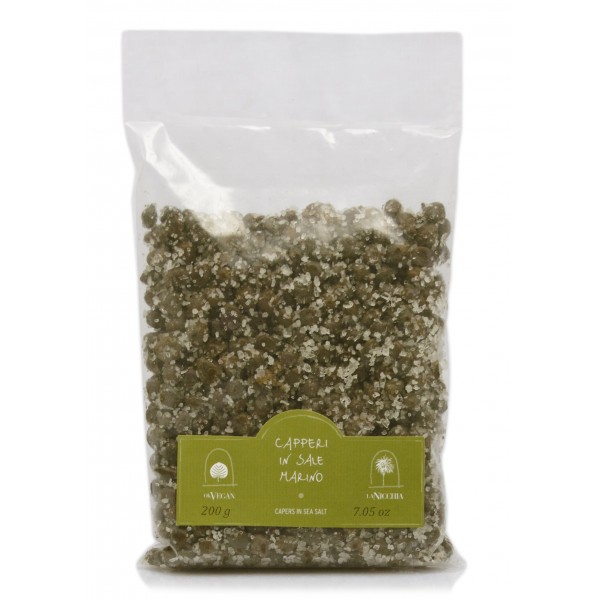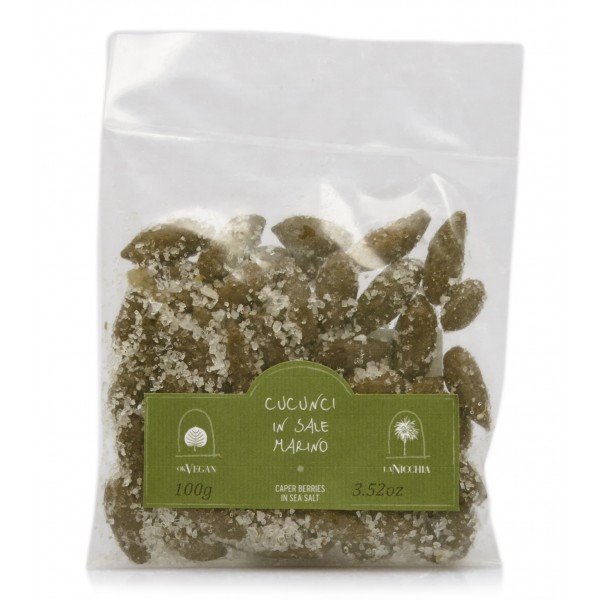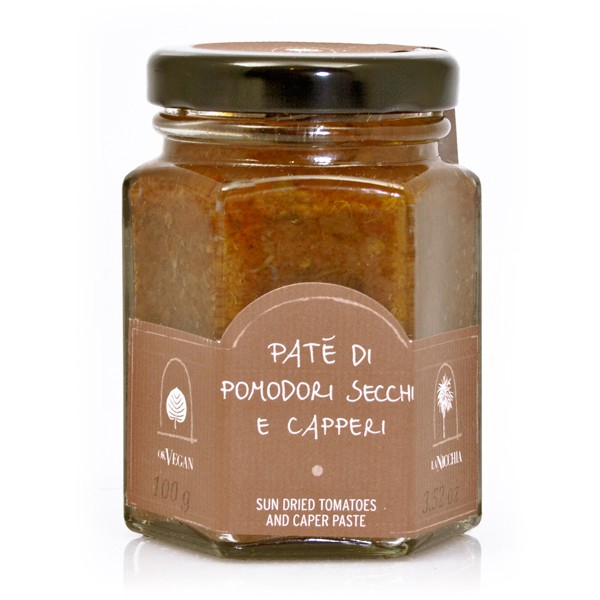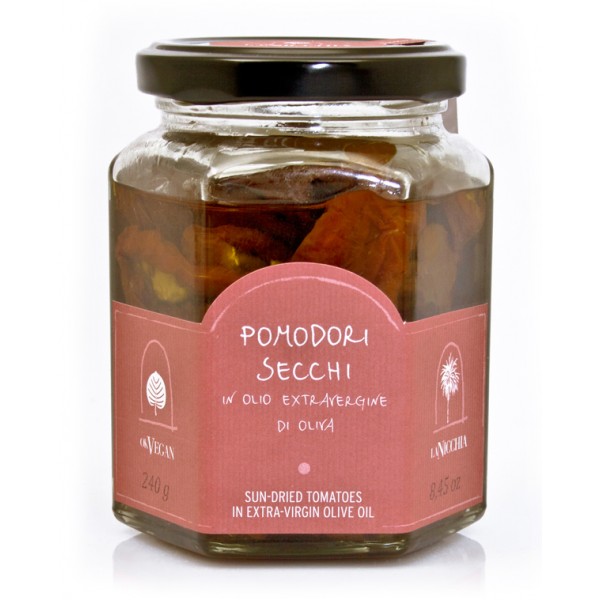No products
Categories
- Fashion Accessories
- Clothing
- Beauty & Lifestyle
-
Hi-Tech & Lifestyle
- Gaming
-
Case
- iPhone 11 Pro
- iPhone 11 Pro Max
- iPhone 11
- iPhone X / XS
- iPhone XS Max
- Samsung S10 / S10+ / S10e
- Huawei P30 / P30 Pro / P30 Lite
- Huawei P20 / P20 Pro / P20 Lite
- iPhone XR
- Samsung S9
- Samsung S9+
- iPhone 8 / 7
- iPhone 8 Plus / 7 Plus
- Samsung S8
- Samsung S8+
- Samsung S7
- Samsung S7 Edge
- iPhone 6 / 6 s
- iPhone 6 Plus / 6 s Plus
- iPhone 5 / SE
- Skin
- Audio
- Smart Home
- Drones & Hoverboard
- Photo & Video
- Desk Supplies
- Accessories
- Games
- Beverages
- Food
- Home
- Jewelry
- Luxury
- Travel
- Art
- Footwear
- Vintage Fashion
- Restaurants
- Sport
- Animals
- Gift Ideas
- Kidswear
Extra
Viewed Products
-

CR7 - Cristiano Ronaldo - GS001 - Semiglossy Gold Frame - Sunglasses -...
A model of sunglasses made of...
-

Stella McCartney - Straight-Edge Sunglasses - Glossy Black Gold - Sunglasses...
The exclusive shape of Stella...
La Nicchia
Capers of Pantelleria since 1949
.jpg)
Our History
.jpg)
Our historical roots go way back in time and place.
.jpg)
They are deeply entrenched in the soil of a remote Island, isolated from the world...
.jpg)
Antonio Bonomo and Girolamo Giglio actually set up their Caper Production farm in Pantelleria as far back as 1949.
About Us
.jpg)
When the founders Antonio and Girolamo passed away, their sons garnered the heritage of their fathers’ painstaking and precious toil and entrusted it to Gabriele Lasagni, who carried out extensive studies and research on the raw materials that Pantelleria is endowed with and now manages La Nicchia with a passion.
.jpg)
Sixty years on, ours is the only farming company in Pantelleria that operates as a Farm, a Caper Processing Plant, and a Specialty Food Laboratory.
.jpg)
Working with us in Pantelleria are Battista and Giovanni at the Caper Processing Plant, Maurizio, Nicola and Raffaella at the Specialty Food Laboratory, and Giovanni L. at the Farm.
Our Job
.jpg)
- To do our utmost to preserve a culture tied to the land and set an example in fostering a culture firmly anchored to the ground but with a mind and heart turned toward the sky.
.jpg)
- To invest in the local area in order to keep alive the history and the present of an Island that is in danger of forgetting its true assets.
.jpg)
- To grow, select, respect and offer in the simplest yet most elegant way the raw materials that this harsh land bestows on those who work so hard to reap them.
Our Brand Name
.jpg)
“La Nicchia”, literally ‘The Niche’, symbolizes the value of an area by way of an image and a name that call to mind something to be preserved with care and dedication.
.jpg)
“La Nicchia” offers not merely the Island's typical products but a selection of the best raw materials from our lands, using the simplest possible methods to process them and respecting their uniqueness.
Pantelleria Capers
.jpg)
Perhaps not everyone knows that... The caper (Capparis spinosa L.) is a characteristic plant of the Mediterranean flora and typically grows on old walls, in the cracks of rocks and on stony ground, particularly in seaside habitats. It has a woody stem base with herbaceous branches growing off the top.
.jpg)
Its height can vary from 30 cm to 50 cm; it has succulent, oval-shaped dark green leaves and strikingly beautiful pinky white flowers with delicate purple hues. Its fruit is actually a berry packed with black seeds.
.jpg)
The plant begins to flower between late May and early September, which is when the unopened flower buds are harvested. The buds have to be picked as early as possible and before they blossom: they are small, firm and green and taste very strong. The farmers have to work on the same plant every 8 to 10 days, depending on the seasonal trend, and harvest the capers by hand. This is a painstaking task as they need to bend down low over the plant in conditions of intense heat.
.jpg)
Pantelleria capers are preserved in salt and are used in countless ways to make first and second courses, sauces and condiments. Cooking with capers is quite straightforward: all you have to do is take the required quantity, rinse them under running water to wash off the curing salt, if you wish to reduce the saltiness even more you can let them soak in water until the taste suits the dish you are making, after which they are ready to use.
.jpg)
If the capers you bought were packaged in a bag, you should transfer them to a glass jar and seal it with a screw-top lid. This will prevent moisture loss and stop them from drying out. Preserved in this way, capers can actually last for years and still retain their excellent organoleptic properties.
.jpg)
If the capers you bought were packaged in a bag, you should transfer them to a glass jar and seal it with a screw-top lid.
.jpg)
This will prevent moisture loss and stop them from drying out.
.jpg)
Preserved in this way, capers can actually last for years and still retain their excellent organoleptic properties.
.jpg)
Always avoid buying capers preserved in vinegar or vinegar-based brine as the ideal and best caper preserver is salt, which keeps the properties of the caper unchanged over time. If a more aggressive preserver such as vinegar was chosen, there must surely be a reason for it, don’t you think?
Odd Facts

The inhabitants of Pantelleria use an odd method to boost caper cultivation, which consists of “shooting” caper seeds with a blowpipe into the crevices of walls or between the tiles of fully-exposed roofs.
Creations
.jpg)
.jpg)
.jpg)
.jpg)
.jpg)
.jpg)
.jpg)
Unici

Seven friends, all of whom are producers and ‘interpreters’ of the most virtuous Italian gastronomy businesses, are combining their individual talents and working together in order to achieve some ambitious goals: excellence in product quality and originality of image, in all cases a highly distinctive one.
Seven strong personalities coming together to exchange ideas and compare notes on new projects.
Seven districts set on pursuing internationalization through “special” products: Prato, Forcoli (Pisa), Albinea (Reggio Emilia), Monte San Pietrangeli (Fermo), Fossacesia (Chieti) Pantelleria (Trapani) and Florence.
Seven colours, one for each company: Black for Ursini, White for Mancini, Red for Il Borgo del Balsamico, Blue for Biscottificio Mattei, Brown for Savini, Pastel for la Nicchia and Green for La Via del Tè.
A real-life story that deserves to be written about in order to leave a mark in the gastronomical panorama of the Mediterranean.
Products La Nicchia - Pantelleria
La Nicchia
Capers of Pantelleria since 1949
.jpg)
Our History
.jpg)
Our historical roots go way back in time and place.
.jpg)
They are deeply entrenched in the soil of a remote Island, isolated from the world...
.jpg)
Antonio Bonomo and Girolamo Giglio actually set up their Caper Production farm in Pantelleria as far back as 1949.
About Us
.jpg)
When the founders Antonio and Girolamo passed away, their sons garnered the heritage of their fathers’ painstaking and precious toil and entrusted it to Gabriele Lasagni, who carried out extensive studies and research on the raw materials that Pantelleria is endowed with and now manages La Nicchia with a passion.
.jpg)
Sixty years on, ours is the only farming company in Pantelleria that operates as a Farm, a Caper Processing Plant, and a Specialty Food Laboratory.
.jpg)
Working with us in Pantelleria are Battista and Giovanni at the Caper Processing Plant, Maurizio, Nicola and Raffaella at the Specialty Food Laboratory, and Giovanni L. at the Farm.
Our Job
.jpg)
- To do our utmost to preserve a culture tied to the land and set an example in fostering a culture firmly anchored to the ground but with a mind and heart turned toward the sky.
.jpg)
- To invest in the local area in order to keep alive the history and the present of an Island that is in danger of forgetting its true assets.
.jpg)
- To grow, select, respect and offer in the simplest yet most elegant way the raw materials that this harsh land bestows on those who work so hard to reap them.
Our Brand Name
.jpg)
“La Nicchia”, literally ‘The Niche’, symbolizes the value of an area by way of an image and a name that call to mind something to be preserved with care and dedication.
.jpg)
“La Nicchia” offers not merely the Island's typical products but a selection of the best raw materials from our lands, using the simplest possible methods to process them and respecting their uniqueness.
Pantelleria Capers
.jpg)
Perhaps not everyone knows that... The caper (Capparis spinosa L.) is a characteristic plant of the Mediterranean flora and typically grows on old walls, in the cracks of rocks and on stony ground, particularly in seaside habitats. It has a woody stem base with herbaceous branches growing off the top.
.jpg)
Its height can vary from 30 cm to 50 cm; it has succulent, oval-shaped dark green leaves and strikingly beautiful pinky white flowers with delicate purple hues. Its fruit is actually a berry packed with black seeds.
.jpg)
The plant begins to flower between late May and early September, which is when the unopened flower buds are harvested. The buds have to be picked as early as possible and before they blossom: they are small, firm and green and taste very strong. The farmers have to work on the same plant every 8 to 10 days, depending on the seasonal trend, and harvest the capers by hand. This is a painstaking task as they need to bend down low over the plant in conditions of intense heat.
.jpg)
Pantelleria capers are preserved in salt and are used in countless ways to make first and second courses, sauces and condiments. Cooking with capers is quite straightforward: all you have to do is take the required quantity, rinse them under running water to wash off the curing salt, if you wish to reduce the saltiness even more you can let them soak in water until the taste suits the dish you are making, after which they are ready to use.
.jpg)
If the capers you bought were packaged in a bag, you should transfer them to a glass jar and seal it with a screw-top lid. This will prevent moisture loss and stop them from drying out. Preserved in this way, capers can actually last for years and still retain their excellent organoleptic properties.
.jpg)
If the capers you bought were packaged in a bag, you should transfer them to a glass jar and seal it with a screw-top lid.
.jpg)
This will prevent moisture loss and stop them from drying out.
.jpg)
Preserved in this way, capers can actually last for years and still retain their excellent organoleptic properties.
.jpg)
Always avoid buying capers preserved in vinegar or vinegar-based brine as the ideal and best caper preserver is salt, which keeps the properties of the caper unchanged over time. If a more aggressive preserver such as vinegar was chosen, there must surely be a reason for it, don’t you think?
Odd Facts

The inhabitants of Pantelleria use an odd method to boost caper cultivation, which consists of “shooting” caper seeds with a blowpipe into the crevices of walls or between the tiles of fully-exposed roofs.
Creations
.jpg)
.jpg)
.jpg)
.jpg)
.jpg)
.jpg)
.jpg)
Unici

Seven friends, all of whom are producers and ‘interpreters’ of the most virtuous Italian gastronomy businesses, are combining their individual talents and working together in order to achieve some ambitious goals: excellence in product quality and originality of image, in all cases a highly distinctive one.
Seven strong personalities coming together to exchange ideas and compare notes on new projects.
Seven districts set on pursuing internationalization through “special” products: Prato, Forcoli (Pisa), Albinea (Reggio Emilia), Monte San Pietrangeli (Fermo), Fossacesia (Chieti) Pantelleria (Trapani) and Florence.
Seven colours, one for each company: Black for Ursini, White for Mancini, Red for Il Borgo del Balsamico, Blue for Biscottificio Mattei, Brown for Savini, Pastel for la Nicchia and Green for La Via del Tè.
A real-life story that deserves to be written about in order to leave a mark in the gastronomical panorama of the Mediterranean.
Products La Nicchia - Pantelleria
-
La Nicchia - Capers of Pantelleria since 1949 - Medium Capers in Sea Salt -...
Pantelleria capers sorted in three different sizes (small - medium - large) preserved in sea salt. Use small capers for garnishing fish and red or white meat dishes. Use large capers for flavoring tomato sauces or making creamy sauces and pâtés. Medium-sized capers can be used for both (garnishing and flavoring). Rinse off the salt before use.
9,00 € -
La Nicchia - Capers of Pantelleria since 1949 - Medium Capers in Sea Salt -...
Pantelleria capers sorted in three different sizes (small - medium - large) preserved in sea salt. Use small capers for garnishing fish and red or white meat dishes. Use large capers for flavoring tomato sauces or making creamy sauces and pâtés. Medium-sized capers can be used for both (garnishing and flavoring). Rinse off the salt before use.
16,25 € -
La Nicchia - Capers of Pantelleria since 1949 - Small Capers in Sea Salt - 100 g
Pantelleria capers sorted in three different sizes (small - medium - large) preserved in sea salt. Use small capers for garnishing fish and red or white meat dishes. Use large capers for flavoring tomato sauces or making creamy sauces and pâtés. Medium-sized capers can be used for both (garnishing and flavoring). Rinse off the salt before use.
6,50 € -
La Nicchia - Capers of Pantelleria since 1949 - Small Capers in Sea Salt - 200 g
Pantelleria capers sorted in three different sizes (small - medium - large) preserved in sea salt. Use small capers for garnishing fish and red or white meat dishes. Use large capers for flavoring tomato sauces or making creamy sauces and pâtés. Medium-sized capers can be used for both (garnishing and flavoring). Rinse off the salt before use.
10,25 € -
La Nicchia - Capers of Pantelleria since 1949 - Small Capers in Sea Salt - 500 g
Pantelleria capers sorted in three different sizes (small - medium - large) preserved in sea salt. Use small capers for garnishing fish and red or white meat dishes. Use large capers for flavoring tomato sauces or making creamy sauces and pâtés. Medium-sized capers can be used for both (garnishing and flavoring). Rinse off the salt before use.
18,75 € -
La Nicchia - Capers of Pantelleria since 1949 - Small Capers I.G.P. of...
Only small-sized Pantelleria capers with PGI ministerial certification. Ideal for garnishing pasta, fish and meat dishes, and salads.
7,00 € -
La Nicchia - Capers of Pantelleria since 1949 - Caper Berries in Sea Salt -...
Only medium-sized caperberries, carefully selected for the right level of firmness and good appearance. Even without the stalk, they are ideal as appetizers or for garnishing salads, fish and red or white meat dishes.
5,95 € -
La Nicchia - Capers of Pantelleria since 1949 - Caper Berries in Sea Salt -...
Only medium-sized caperberries, carefully selected for the right level of firmness and good appearance. Even without the stalk, they are ideal as appetizers or for garnishing salads, fish and red or white meat dishes.
9,60 € -
La Nicchia - Capers of Pantelleria since 1949 - Caper Berries in Sea Salt -...
Only medium-sized caperberries, carefully selected for the right level of firmness and good appearance. Even without the stalk, they are ideal as appetizers or for garnishing salads, fish and red or white meat dishes.
17,25 € -
La Nicchia - Capers of Pantelleria since 1949 - Caper and Oregano Paste - 100 g
Made exclusively with selected raw materials, this coarse pâté is ideal on toast and canapés served as appetizers or brunch.
6,95 € -
La Nicchia - Capers of Pantelleria since 1949 - Caper and Olive Paste - 100 g
Perfect spread on warm canapè or as sauce for fish dishes. It is delicious in sauces for fi rst courses.
6,95 € -
La Nicchia - Capers of Pantelleria since 1949 - Caper and Almonds Pesto - 100 g
Made exclusively with selected raw materials, this coarse paste can be thinned down with a drizzle of raw oil and used as pasta dressing. Try also in smoked salmon roll-ups.
6,95 € -
La Nicchia - Capers of Pantelleria since 1949 - Caper and Almonds Pesto - 100 g
Made exclusively with selected raw materials, this coarse sauce is a perfect condiment for boiled red meats. A spoonful added to a salad gives it a really tasty extra touch.
6,95 € -
La Nicchia - Capers of Pantelleria since 1949 - Sun Dried Tomatoes and Caper...
Made exclusively with selected raw materials, this coarse pâté is an ideal accompaniment for pan-grilled or broiled white meats and for spreading on mouthwatering pieces of toast served as appetizers or snacks.
6,95 € -
La Nicchia - Capers of Pantelleria since 1949 - Black Olives Paste - 100 g
Made exclusively with selected raw materials, this creamy and slightly sharp-tasting pâté is mouthwatering spread on toast and canapés for appetizers with friends.
6,75 €Sold Out - Not Available -
La Nicchia - Capers of Pantelleria since 1949 - Green Olives Paste - 100 g
Made exclusively with selected raw materials, this creamy and slightly sharp-tasting pâté is mouthwatering spread on toast and canapés for appetizers with friends.
6,75 €Sold Out - Not Available -
La Nicchia - Capers of Pantelleria since 1949 - Sun-Dried Tomatoes in...
Carefully selected, fleshy tomatoes with just the right balance between savory and aromatic flavors. Ideal in salads and on bruschette.
10,75 € -
La Nicchia - Capers of Pantelleria since 1949 - Sun-Dried Tomatoes and Capers...
Carefully selected, fleshy tomatoes with just the right balance between savory and aromatic flavors, enhanced by the fragrance of the capers and wild fennel seeds. Ideal in salads and as an accompaniment to white meat dishes.
10,75 €Sold Out - Not Available -
La Nicchia - Capers of Pantelleria since 1949 - Sun-Dried Tomatoes, Olives...
Carefully selected, fleshy tomatoes with just the right balance between savory and aromatic flavors, enhanced by the fragrance of the capers and wild fennel seeds. Ideal in salads and as an accompaniment to white meat dishes.
10,75 € -
La Nicchia - Capers of Pantelleria since 1949 - Sun-Dried Tomatoes in...
Perfect for salads or to garnish pizza and meat dishes. Like appetizer with bread.
10,75 €Sold Out - Not Available -
La Nicchia - Capers of Pantelleria since 1949 - Moscato "Zibibbo" Raisins on...
Zibibbo Muscat raisins, aromatic, sweet and soft. The seeds inside the raisins give a crunchy note but they are neither hard not tannic when you chew them. They are sun-dried and packed as a whole a cluster for the pleasure of picking raisin after raisin from the grape-stalk. Ideal as a dessert at the end of a meal, energizing after sports and excellent...
11,00 €























